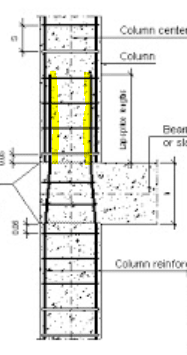As far as slender column design is concerned (assuming braced column), the moment amplification can often be extremely sensitive to the concrete cover. Even increasing the cover from 30mm to 60mm to account for the joggle in the reinforcement at the slab level can have a significant impact.
Can this joggle in the reinforcement (and increased cover) be disregarded for slender column design, given moment amplification will probably be more critical at mid-height? I am doubtful this is ever accounted for.

Can this joggle in the reinforcement (and increased cover) be disregarded for slender column design, given moment amplification will probably be more critical at mid-height? I am doubtful this is ever accounted for.


